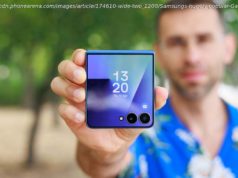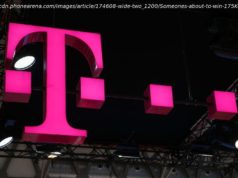Tango is toast. Here’s Google’s new plan for AR.
The Lenovo Phab 2 Pro, the first Google Tango phone and one of a species about to go extinct.
CNET senior reporter Rich Nieva… and a cartoon lion that doesn’t exist. ARCore in action.
So now, instead of doggedly trying to convince manufacturers to build thick, battery-unfriendly Tango phones with their own dedicated apps like before, Google is cutting its losses and changing its playbook to match Apple’s — practically word for word.
And both are targeted at developers now, consumers later. They’re promising those developers an easy way to create Pokemon Go-like augmented reality apps that can theoretically run on hundreds of millions of existing phones and live in a normal app store.
Google isn’t blind. Sure, the company’s trying to spin this move as its own idea. (Google told CNET it’s been working on Tango-less AR for a while, but waffled when we asked how long.) But Google AR/VR boss Clay Bavor not only admits there are similarities to Apple, he hints that they’re intentional.
Google’s Clay Bavor, introducing the Daydream View headset in October 2016.
Blocks, a demo that shows off ARCore’s basic capability.
«I don’t worry a lot about ‘first.’ I care about there being great things on Android, and having the device capabilities to support them, » Bavor tells us. «There’s a very high level of comparability, and I think a developer who’s built something for ARCore would find it pretty straightforward to bring it to ARKit and vice versa.»
In fact, Bavor suggests the similarities could help Google get its own future AR apps onto Apple iPhones, too. «We have Maps everywhere, we have Search everywhere, we have Gmail everywhere. We can only bring the AR experiences we’re so excited about to life with a broad device footprint for people to deploy on.»
The company has grand ambitions for persistent, shared AR experiences too. Bavor imagines adding a layer of digital graffiti to the front of his house, or digital Post-Its so he can tell house guests how to use his «crazy coffeemaker.»
Apple’s AR platfom is coming to iOS. Users will be able place 3D objects in the real world similar to competing AR products from Google and Facebook.
While Google’s decision to pivot toward Apple’s vision makes a whole lot of sense, it may have some catching up to do.
Google’s coolest demo: a furniture search based on available space.
Google couldn’t show me a shared AR experience yet, either. That’s talk for now.
And while Bavor says ARCore software should run on as many as 100 million Android phones this winter (running Android Nougat and up) , that’s a heck of a thing to promise given just how many different cameras and software divisions exist among the Android phones in the market.
Bottom line: It’s too early to say if ARCore is as good as ARKit, or even good enough. But here’s hoping.
It’s worth noting that — although Google’s focus is no longer on Tango, and Bavor all but admits the ARCore brand will replace it — the idea of using multiple hardware sensors is still in the cards.
«I believe firmly that we’re going to see more and more sensing capability on phones over time, » he said.
The method may have changed, but the dream lives on.






